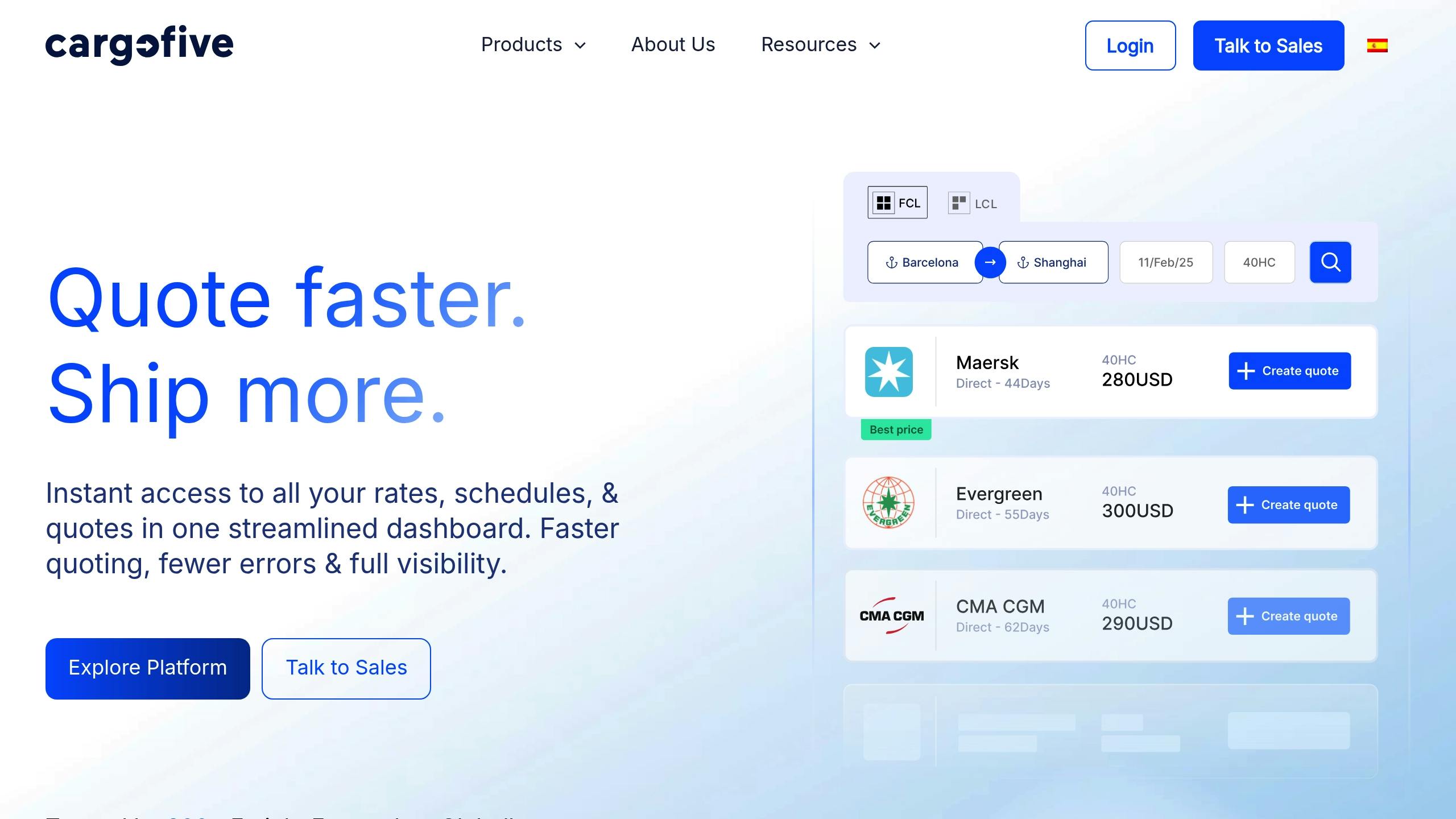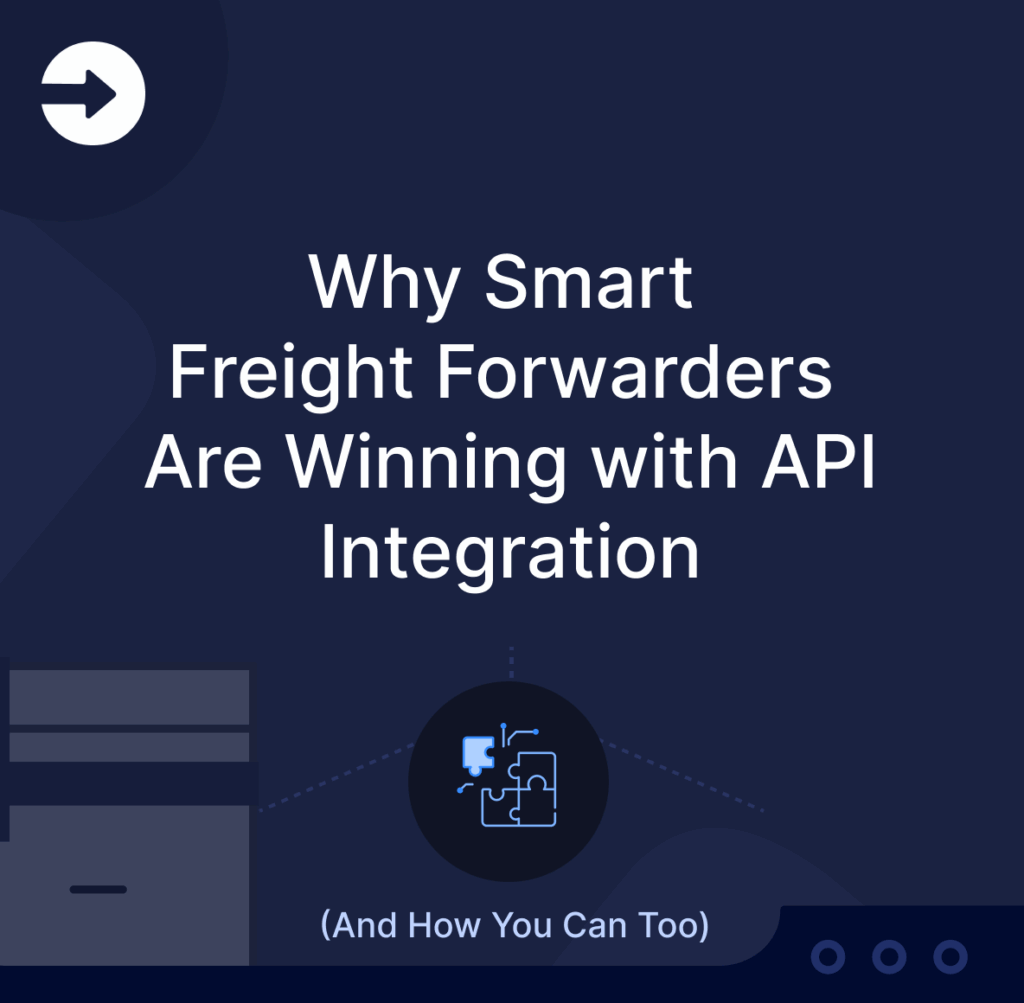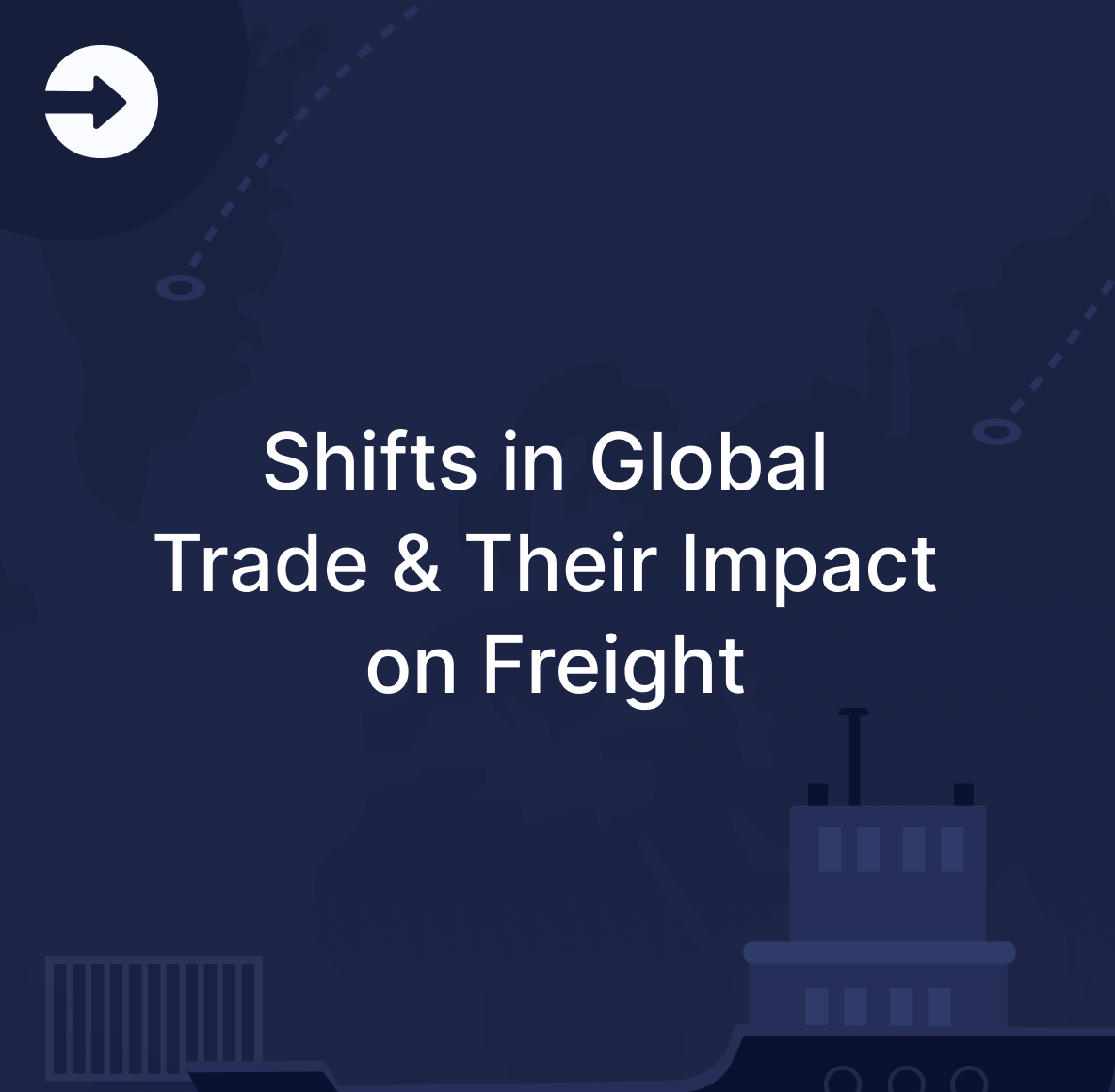Digital tools are transforming freight forwarding by solving long-standing challenges in carrier relationships. They streamline communication, automate workflows, and provide data-driven insights, making operations faster, more accurate, and transparent. Here’s how they help:
- Faster Communication: Real-time updates and automated alerts replace slow emails and calls, reducing delays and misunderstandings.
- Centralized Documentation: All documents are stored in one place, improving organization and collaboration.
- Automation: Tasks like rate management, shipment tracking, and quoting are handled efficiently, cutting manual errors and saving time.
- Data-Driven Decisions: Analytics help identify the best carriers based on performance metrics like on-time delivery rates, transit times, and costs.
Improving Communication Between Freight Forwarders and Carriers
Strong communication is the backbone of any successful partnership between freight forwarders and carriers. Yet, many still rely on outdated methods that slow things down and create unnecessary confusion.
With digital tools now available, these hurdles are being cleared, enabling smoother and more efficient exchanges of information.
The scale of the problem is striking. A survey of 200 logistics managers found that getting a quote takes an average of 3 days, often involving up to 50 emails and 10 calls for a single trade. This level of inefficiency drains time, resources, and energy, while also straining working relationships.
Let’s dive into how digital tools are changing this dynamic by simplifying updates and document sharing.
Real-Time Communication and Updates
Digital platforms make communication faster and more efficient with tools like integrated messaging and automated alerts. Instead of waiting hours – or even days – for updates, freight forwarders and carriers can exchange critical information instantly.
For example, automated alerts notify all parties of delays or route changes as they happen. This proactive approach stops minor issues from snowballing into major disruptions.
In fact, companies using such tools have reduced resolution times by up to 87%.
Another advantage is the transparency these tools bring. Every stakeholder gets real-time access to shipment data. This level of visibility builds trust by eliminating the guesswork that often leads to misunderstandings or service failures.
Centralized Document Sharing and Collaboration
One of the biggest pain points in logistics is managing scattered paperwork and fragmented communication. Digital platforms solve this by centralizing everything in one accessible location. Instead of juggling emails and paper trails, all documents and updates are stored in a single, organized hub.
These platforms allow supply chain stakeholders to collaborate seamlessly. Everyone works from the same set of documents, reducing confusion caused by outdated versions or missed updates.
Cloud-based systems also make sharing contracts, invoices, or bills of lading quick and secure. Authorized users can access essential paperwork instantly, cutting out delays tied to delivery or clarification.
By centralizing documentation, these tools streamline processes and enhance trust. Real-time updates and shared access help minimize miscommunication.
Collaborative features also allow for immediate adjustments to shipment details, route changes, or document updates. Everyone involved sees these changes in real time, a level of coordination that was nearly impossible with older methods.
“The single biggest problem in communication is the illusion that it has taken place”.
Digital tools address this problem head-on by keeping a clear, accessible record of all communications. This ensures nothing gets lost in translation and holds everyone accountable.
These improvements in communication set the stage for the automated workflows and data insights we’ll explore next. When freight forwarders and carriers can consistently rely on accurate, timely information, they build stronger, more lasting partnerships that benefit everyone involved.
Streamlining Workflows with Automation
Manual processes are a drain on both time and money. For example, sales teams spend 43% of their time on quotes, and as many as 80% of companies overpay for freight due to outdated manual rate management systems.
Automation not only speeds things up but also builds trust with carriers by ensuring smoother and more reliable operations.
By removing these inefficiencies, automation transforms workflows. Digital tools can reduce quoting times from days to mere minutes and cut manual tasks by as much as 92%.
These faster, more accurate processes naturally enhance carrier confidence and improve collaboration. The result? Better communication, quicker responses, and a noticeable boost in operational efficiency.
Automating Rate Management and Contract Processing
Rate management is one area where automation truly shines. Errors are common in manual systems – 15% of carrier invoices contain mistakes – and the industry could save a staggering $700 million annually by adopting digital solutions.
Digital platforms streamline rate management by handling multiple rate requests at once, eliminating delays. Carriers no longer have to wait days for quotes; instead, they receive responses in minutes.
Automated systems also ensure accuracy, while centralized contract management keeps everyone on the same page.
Here’s how manual and digital approaches compare:
| Factor | Manual | Digital |
|---|---|---|
| Time | Up to 3 days | Minutes |
| Error Rate | 15% invoice errors | Minimal |
| Labor Costs | High | Reduced by 80% |
Real-time spot pricing and booking capabilities are becoming essential in today’s freight operations. Automated systems adjust to market changes instantly, allowing freight forwarders to offer competitive rates without sacrificing profitability.
A great example of this is Cargofive, which connects with over 25 shipping lines and centralizes contract management onto one platform.
Its automation tools handle rate processing and integrate with existing ERP and TMS systems, eliminating the need for repetitive manual data entry.

Simplifying Shipment Tracking and Notifications
Automation isn’t just about rates – it’s also revolutionizing shipment tracking. Customers have high expectations: 93% want delivery alerts, and 98% see these notifications as critical for staying loyal to a brand.
For freight forwarders, automated tracking has become a must-have for maintaining strong customer and carrier relationships.
These systems provide real-time updates without the need for manual follow-ups. For instance, Hill Bros. Transportation reduced invoice delays by 80% and saved over 1,000 back-office hours annually.
Automated notifications can be tailored to key delivery stages, such as order confirmation, shipment preparation, and transit updates.
Alerts are sent via SMS, WhatsApp, or app notifications, ensuring timely updates through the recipient’s preferred channel. Including details like order numbers, delivery addresses, ETAs, and tracking links minimizes follow-up inquiries and improves transparency.
Beyond individual shipments, workflow automation significantly boosts overall efficiency. Vector reports a 30% increase in labor productivity and a 67% reduction in detention fees thanks to automation.
These improvements pave the way for smoother operations and stronger partnerships with carriers.
Advanced platforms, like C.H. Robinson’s generative AI, take automation even further by delivering thousands of price quotes and processing orders in seconds.
This kind of technology allows freight forwarders to handle larger volumes while maintaining the personal touch that’s essential for building long-term relationships with carriers and customers alike.
Building Stronger Carrier Partnerships Through Data Insights
Data takes the guesswork out of decision-making, transforming it into a strategic advantage. For freight forwarders, this approach makes them 23 times more likely to acquire customers, 6 times more likely to retain them, and 19 times more likely to be profitable.
In fact, 98% of third-party logistics companies and 93% of shippers agree that big data analytics leads to smarter decision-making. With business intelligence adoption in shipping now at 26% and climbing, data-driven partnerships are quickly becoming the norm.
This shift allows freight forwarders to use advanced analytics to refine how they evaluate carriers.
Digital platforms play a key role by consolidating data from carriers, shipments, and business processes. These tools help pinpoint the most cost-effective or fastest carrier for specific shipment types or regions.
This level of insight empowers freight forwarders to make informed choices about which carriers to prioritize for various routes and cargo needs.
Using Performance Analytics for Better Decisions
Performance analytics reveal trends and patterns that manual tracking often misses. With digital tools, freight forwarders can automate workflows and dive into detailed performance data, connecting operational efficiency with smarter carrier decisions.
For instance, analyzing historical delivery data, traffic trends, and weather patterns helps optimize routing strategies and identify the most dependable partners.
Standardizing performance metrics across all carriers ensures freight forwarders can clearly see which carriers add value and which fall short.
These metrics go beyond just delivery times. They include factors like communication responsiveness, claim ratios, and adherence to special handling requirements.
Key performance indicators (KPIs) such as on-time delivery rates, transit times, cost per mile, fuel efficiency, and customer satisfaction scores provide a comprehensive view of each carrier’s value.
This is crucial, especially considering that 13% of consumers say they wouldn’t order again from a retailer if their package arrived late.
Centralized analytics platforms simplify collaboration by gathering data like Non-Delivery Reports (NDRs), Proof of Delivery (PoDs), and customer feedback in one place.
This eliminates the hassle of chasing performance metrics from multiple sources and provides a reliable foundation for evaluating carriers. Real-time tracking further enables proactive decisions, allowing freight forwarders to adjust quickly and address potential delays.
When performance issues arise, these tools help pinpoint the root cause and work with carriers to resolve problems before they escalate.
Tracking Key Metrics for Partnership Success
Tracking performance metrics is essential for building stronger, data-backed relationships with carriers. Metrics like on-time performance (OTP), average carrier costs, transit times, claim ratios, and communication responsiveness are critical for assessing carrier contributions to business outcomes.
For instance, on-time performance serves as a key benchmark. During the 2022 holiday season, FedEx achieved 95.2%, UPS reached 97.5%, and USPS delivered 94.3%.
These numbers help freight forwarders set realistic expectations and identify carriers that consistently meet or exceed industry standards.
Average carrier costs also offer insights for negotiation:
| Shipping Type | FedEx | UPS | USPS |
|---|---|---|---|
| Flat Rate | Starts at $11.10 | Starts at $10.20 | Starts at $9.35 |
| Overnight | Starts at $61.25 | Starts at $67.44 | Starts at $28.75 |
| Ground | Starts at $10.10 | Starts at $10.10 | Starts at $8.95 |
Claim ratios, which reflect cargo handling quality, are another crucial metric. For example, damage rates vary among carriers: UPS (11%), USPS (10%), and FedEx (7%). Such data helps freight forwarders choose carriers that align with the value and handling needs of their cargo.
Advanced analytics also enable predictive forecasting, which helps secure better pricing and long-term contracts. By analyzing shipping volumes, seasonal trends, and lane-specific efficiencies, freight forwarders can approach rate negotiations with concrete data instead of estimates.
Presenting performance data that highlights mutual success builds trust, encouraging carriers to offer competitive rates and prioritize service quality. Companies using freight audit analytics have reported lower transportation costs, improved carrier relationships, and better service levels.
Regularly reviewing contracts and performance is another key to successful partnerships. Digital tools can centralize contract details, track expiration dates, and even automate renewal.
This ensures that agreements evolve based on actual performance rather than outdated terms. Custom performance metrics – like ETA SLA breaches, NDRs, PoDs, and driver deviations – further enhance productivity and operational efficiency. These benchmarks create accountability on both sides and provide a roadmap for continuous improvement.
Using Cargofive to Improve Carrier Relations

Cargofive embodies the advantages of digital tools by offering a streamlined, integrated platform designed to enhance carrier relationships. While data analytics lay the groundwork for better partnerships, the right platform is essential to bring it all together.
Cargofive tackles common challenges like fragmented rate management and tedious contract handling by centralizing carrier data and automating key workflows. This not only simplifies how data is managed but also improves real-time communication and decision-making.
“Managing dynamic rates and inconsistent formats from different shipping companies, along with new pricing concepts, was a significant challenge for us.”
Key Features and Benefits of Cargofive
Cargofive brings SPOT, FAK, NAC, and contract rates into a single, searchable workspace. This eliminates the need for manual searches and reduces errors. With AI-powered tools, the platform can extract complex contract terms and automate the quoting process.
Other features, like real-time schedule visibility, automated account syncing, and seamless integration with TMS/ERP systems, ensure smoother workflows and keep everyone informed.
How Cargofive Supports U.S. Freight Forwarders
Cargofive is particularly well-suited to meet the needs of U.S. freight forwarders. It connects with major carriers in real time and integrates with over 25 liners that serve U.S. trade routes, providing comprehensive coverage for both domestic and international shipments.
Freight forwarders using Cargofive can cut procurement time by up to 90%, freeing teams to focus on building stronger relationships instead of getting bogged down by administrative tasks. Additionally, by reducing quote response times by 40%, the platform helps meet the fast-paced demands of U.S. customers.
Cargofive’s commitment to advancing industry digitization is evident through its participation in the DCSA+ program. This initiative places U.S. freight forwarders at the cutting edge of digital transformation. As Sebastian Cazajus, CEO of Cargofive, explains:
“Joining DCSA+ is a strategic step forward in our mission to create a more connected, transparent, and efficient container shipping industry. This partnership supports our upcoming milestones, particularly our goal of enabling freight forwarders and carriers to distribute their services in a more efficient, standardised, and integrated way.”
The platform’s intuitive design ensures that teams can adopt it quickly, whether they’re in the office, at the port, or on the move. Its mobile accessibility makes it easier to communicate with carriers in real time, especially during critical shipment windows, supporting the around-the-clock nature of international freight operations.

Conclusion: Transforming Carrier Relations with Digital Solutions
The freight forwarding industry is at a crossroads, where embracing digital transformation has become a necessity for growth. This shift is redefining how freight forwarders and carriers work together, replacing outdated, manual processes with efficient, data-driven systems.
The benefits of digital tools are undeniable. For instance, they significantly reduce response times and can lead to more than a 5% increase in sales.
Faster responses to carrier requests – measured in minutes rather than hours – not only improve operational efficiency but also build trust and reliability, both of which are critical for strong partnerships.
Modern carrier relationships now thrive on real-time communication and centralized data management. Digital platforms eliminate delays and inconsistencies, ensuring everyone involved has access to accurate, up-to-date information. This level of transparency fosters smoother operations and better collaboration.
Automation plays a key role, simplifying tasks like rate management, shipment tracking, and quoting. By reducing manual work and human error, these tools allow teams to focus on strategic goals, such as nurturing carrier relationships and planning for long-term success.
Data insights and performance analytics further enhance these partnerships. Freight forwarders and carriers can use this data to spot trends, address problems early, and uncover new opportunities.
This level of accountability and proactive problem-solving strengthens trust and creates a solid foundation for lasting business relationships.
With these operational improvements, the industry is set for significant growth. The global digital freight forwarding market is projected to grow at a compound annual growth rate (CAGR) of over 23% from 2021 to 2028, underscoring the importance of early adoption.
Those who embrace digital transformation today are positioning themselves for a competitive edge in the future.
FAQs
How do digital tools improve communication between freight forwarders and carriers?
Digital tools have transformed how freight forwarders and carriers communicate by enabling real-time data sharing and using standardized formats. This shift reduces the delays and errors that often come with relying on emails and phone calls. With features like API integrations, forwarders can quickly access updates on rates, shipment statuses, and available capacity, making interactions faster and more transparent.
These tools also tackle the challenges of managing complex tasks, such as handling different rate formats and frequent updates, with ease. By automating essential processes and delivering consistent, accurate information, they help improve efficiency and build stronger, more reliable partnerships between freight forwarders and carriers.
How do digital platforms simplify document management in freight forwarding?
Digital platforms make managing documents much easier by digitizing and centralizing essential logistics paperwork like bills of lading, invoices, and shipment records. This not only removes the hassle of dealing with manual paperwork but also ensures all vital information is securely stored and easy to access.
With tools like automated workflows and real-time document sharing, these platforms help cut down on errors, simplify compliance processes, and boost overall efficiency. Freight forwarders can quickly access, update, and share documents, saving valuable time and improving teamwork across global logistics operations.
How do performance analytics and data insights enhance carrier selection and partnership management?
Performance analytics and data insights are key to refining carrier selection and managing partnerships effectively. With access to real-time, precise data on carrier performance, rates, and capacity, freight forwarders can make well-informed choices, objectively compare carriers, and select options that are both dependable and cost-efficient.
Analyzing trends and patterns also opens the door for smarter negotiations and building stronger relationships with carriers. On top of that, these insights simplify tasks like handling fluctuating rates and aligning inconsistent formats, leading to smoother operations, greater transparency, and better collaboration with carriers.
AUTHOR



